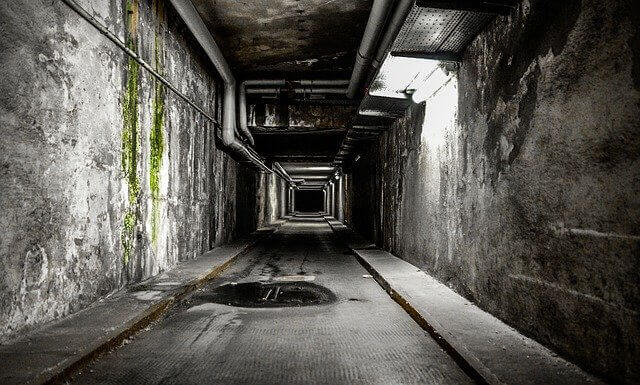Classification of Tunnel Drainage System
Tunnel Drainage systems are classified as:
(1) Drainage system provided at the time of construction or temporary drainage system.
(2) Drainage system provided in completed tunnels or permanent drainage system.

(1) Temporary Drainage System
This is provided to remove groundwater from the tunnel at the time of construction. In this system, water is removed either by (i) Open-ditch drainage system or (ii) Pumping system.
a) Open Ditch Drainage System:
In this system, water is collected and removed in open ditches, laid with proper slopes at some distance away from the place of work. The open drains or ditches are constructed along the tunnel on both sides at the invert. This drainage system is suitable for rock bases and water-resistant soil.
b) Pumping System:
In this system, sumps are constructed at regular intervals of around 300 m to 500 m. The water is collected in the sumps and is pumped out. For pumping the water, any types of centrifugal pump could be used.
(2) Permanent Drainage System
Permanent Drainage System is provided in one of the following methods:
a) By providing a central Drain
In this system, a central drain is provided between two railway tracks or under the road pavement. It should have sufficient capacity to control the expected water in the tunnel. It should be provided with facilities for inspection and clearing. Inspection manholes should be provided at a distance of 30 m to 50 m.
b) By providing Side Drains
This system is effective for single lane road or railway tunnel where the volume of water to be drained is small. In this system, drains are constructed on either side of the railway track or on the road.
c) By providing corrugated iron shed and side drains
This is provided in tunnels in which water leaks from the roof and side walls of tunnels. By providing corrugated iron shed, shaped to the contour of the roof, water is prevented from dropping on the pavement or railway track. The corrugated shed guides the water to the side drains and is drained out.
Read More:
Methods of Ventilation in Tunnels